We live in an age of pollution that has massive effects on our health. Our bodies are being starved for clean oxygen-rich air. But urbanization and modern living do not allow much room for us to clean up the air we breathe.
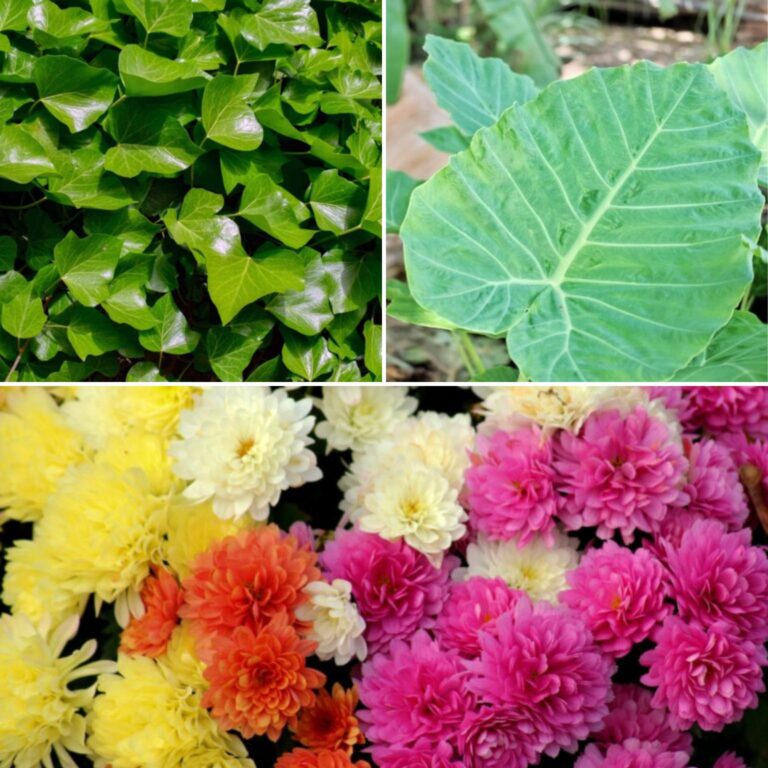
With global warming and climate change at the forefront of research, scientists have been studying the air we breathe for a long time.
We know for a fact that the quality of the air we breathe has a direct impact on our health. The inhalation of toxic air particles leads to the death of more than three million people globally every year.
For those in perfect health, with limited exposure to pollutants, symptoms can include a scratchy, itchy throat; irritation of the eyes and nose; shortness of breath; and a tight feeling in the chest.
That is for those lucky enough to experience GOOD health.
In older people, babies, children, people with compromised heart and lung function, outdoor workers, pregnant women, and people dealing with other health issues, exposure to bad air can lead to asthma, bronchitis, respiratory infections, heart attacks, arrhythmias, stress to the heart and lungs including the accelerated aging of the heart and lungs and a reduction of lung capacity and function.
Ground-level ozone, smoke, smog, exhaust fumes, gas appliances, particulate matter, and ventilation are all contributors to the sick air we breathe.
Often indoor pollutants cause ‘sick building syndrome’; essentially, a building that is a breeding ground for illness due to toxins in the air.
Nature has blessed the planet with its own set of lungs: plants.
Plants breathe in carbon dioxide (which is what we breathe out) and breathe out pure oxygen (which is what we breathe in) through a process called photosynthesis.
They are not air conditioners in the sense of heating or cooling a room, but they are definitely the best air conditioners because of their ability to clean up the air we breathe.
Our relationship with plants is the ultimate symbiotic relationship as we give each other the breath of life.
Having indoor plants ensures that the air we breathe is that much cleaner and healthier for our bodies.
In addition, studies have shown that people who tend to plants have reduced stress levels, have better coping mechanisms, are happier, and less inclined to suffer from depression.
Having the right indoor plants can have an even bigger impact on our lives than just any old pot plant. Some plants are more effective in cleaning up the air we breathe.
If you are looking for a quick guide to help get you started, the table below will give you a better understanding of the items in your home that may be affecting your health.
| Toxin | Where It Is Found | Related Health Issues |
|---|---|---|
| Trichloroethylene | Ink Paint Paint remover Varnish Lacquers Glue and adhesives | Irritation to mouth and nose Headache Nausea Vomiting A heightened state of excitement |
| Sulfur Dioxide | Gas formed by the burning of fuels in industries | Irritation in the lining of the lungs, throat, and nose Asthma Cardiovascular symptoms |
| Ammonia | Floor waxes Fertilizer Smelling salts Window cleaner | Eye irritation Sore throat Coughing |
| Xylene | Rubber Leather Exhaust fumes Tobacco smoke | Dizziness Headache Irritation to the mouth and throat Heart problems Confusion Liver damage Kidney damage Coma Drowsiness Balance issues Fainting Irritation to the skin, eyes, and lungs |
| Nitrogen Dioxide | Vehicle exhaust Tobacco smoke Appliances fueled by gas, wood, coal, or kerosene | Wheezing and cough Headache Dizziness Irritation of the eyes, nose, and throat Shortness of breath Tight chest Excessive sweating Chest pain Choking |
| Formaldehyde | Waxed paper Paper bags Tissues Paper towels Synthetic fabrics Plywood paneling | Irritation to the nose, mouth, and throat Swelling of the larynx and lungs |
| Benzine | Plastic Detergents Lubricants Furniture wax Resin Tobacco smoke Glue | Irritation to the eyes Dizziness Elevated heart rate Drowsiness Confusion Loss of consciousness |
| Suspended Particulate Matter | Invisible liquid particles in the air that are too small to be seen with the naked eye that carries dust, pollen, and other toxins | Irritation of the eyes Irritation of the respiratory tract that can lead to asthma and a reduction in cardiovascular function |
There is such a range to choose from, from beautiful flowers to big leafy plants that respire more efficiently.
1. Heartleaf Philodendron / Sweetheart Plant / Philodendron Scandens (Philodendron Oxycardium)
It bears what looks like a white and green flower but is actually a spathe that is oval-shaped. Its strikingly green leaves are heart-shaped, hence the name.
It is a lovely plant to have as hanging basket plants.
The Heartleaf Philodendron loves filtered or indirect light, but it can do well in less bright parts of the home too.
It originates from the South American rainforests therefore it will expect lots of water and moist soil. This plant requires temperatures of 60°F to 75°F.
It can remove all toxins from the air and formaldehyde on wood surfaces. HOWEVER, this is a toxic plant to dogs and cats; if you have pets, do not introduce this plant to your home or yard.
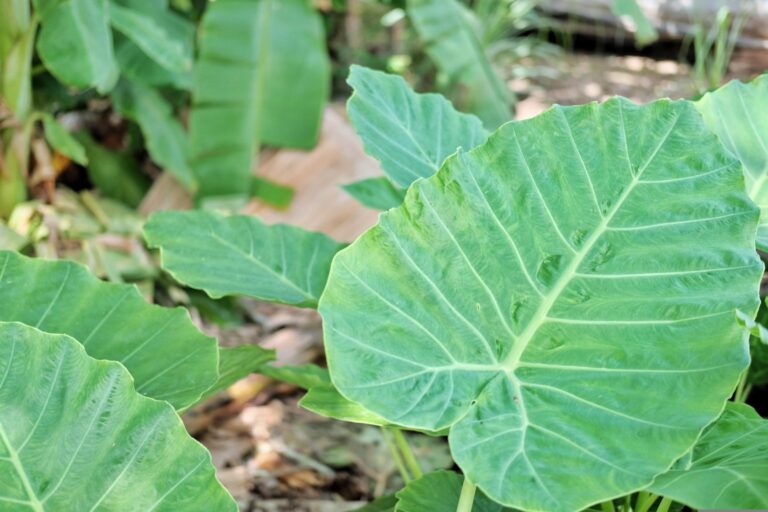
2. Elephant Ear Philodendron / Spadeleaf Philodendron / Burgundy Philodendron (Philodendron Domesticum)
The elephant ear is one of my favorite indoor and outdoor plants (I know it is supposed to be an indoor plant, but I find it loves all the shady corners of my garden and fills the beds perfectly).
It has a gorgeous, dark green, elephant ear-shaped leaf that grows thick and large.
The elephant ear requires shade, filtered, or artificial light. It does not require frequent watering and it requires temperatures between 59°F to 86°F.
NASA’s testing showed that it is a strong contender when cleaning the air in that it absorbs a high quantity of carbon dioxide and releases as much clean oxygen for you to breathe. It is also great to remove formaldehyde.
It does have some toxicity in that it can cause irritation to the eyes if you touch your eyes after touching the plant.
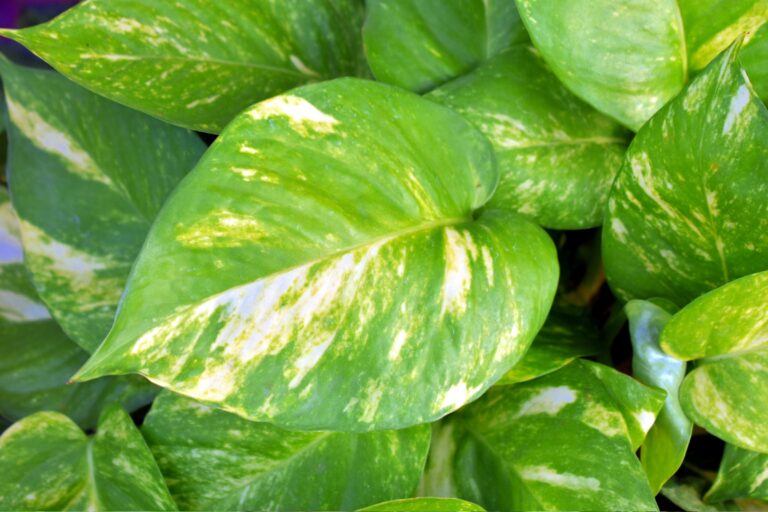
3. Devils Ivy / Golden Pothos / Ceylon Creeper / Hunters Robe / Ivy Arum / Money Plant / Silver Vine / Solomon Islands Ivy / Marble Queen / Taro Vine (Epipremnum Aureum)
This is a robust, easy to maintain evergreen plant that is perfect for hanging baskets, the name devil’s ivy stems from this plant’s robust ability to survive even the worst gardeners (sometimes to the frustration of gardeners who do not want it growing in their yards.
This is very much an indoor plant as it requires artificial light or shade. It requires moist soil therefore you will need to remember to water it but not too much and not often. It grows in temperatures between 59°F and 113°F.
This plant is very effective at removing formaldehyde, toluene, xylene, trichloroethene, and benzine from your home.
It can be used to remove nitrates from fishponds and aquariums and looks incredible growing out of the aquarium. It is toxic to dogs and cats.
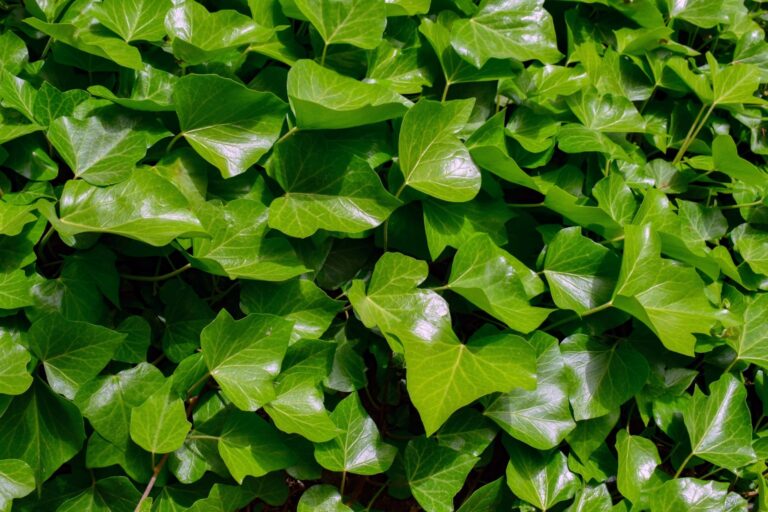
4. English Ivy (Hedera Helix)
Ivy is a very popular indoor plant because it is evergreen and easy to grow. Planted in a hanging basket, it flows beautifully and looks very elegant.
Outdoors, many people use it as ground cover or to cover walls as a vine. It is best suited to moderate conditions, 65°F to 85°F.
It is a very dense, woody plant that grows quickly in areas where there is plenty of light, but the sun is filtered or in partial shade.
It can be very invasive; therefore, you should plan carefully where you plant it.
Ivy grows best in cool, humid conditions. In winter you should always remember to spray your plant to combat the dry conditions that result from artificially heating your home.
They enjoy moisture but should never be soaked.
Ivy removes formaldehyde and benzine from the air. English ivy is mildly toxic when ingested and can cause vomiting.
5. Janet Craig Dracaena (Dracaena Deremensis)
The elegant Janet Craig dracaena is a tried and trusted office or indoor plant for people looking to brighten up and warm their work or living space without spending hours caring for a plant.
It is a hardy plant able to endure low humidity and air conditioning. It does not like direct sunlight at all and they do not like heat. They thrive at temperatures of 70°F to a maximum of 90°F.
It filters benzine, formaldehyde, trichloroethylene, toluene, and xylene from the air. This plant is toxic to animals.
6. Dragon Plant / Warneckii / Cornstalk Dracaena (Dracaena Deremensis)
The Dragon plant is a beautiful evergreen shrub with grey-green leaves with white or green stripes. The glossy leaves will breathe life into any room.
They grow in spring and summer outdoors but thrive indoors all year. They do best in full sun but can be a little shaded.
They need temperatures of 70°F to 80°F and they will not judge you if you forget to water them a couple of times.
The Dragon plant removes formaldehyde, benzine, toluene, trichloroethylene, and xylene from the air. It is mildly toxic to cats.
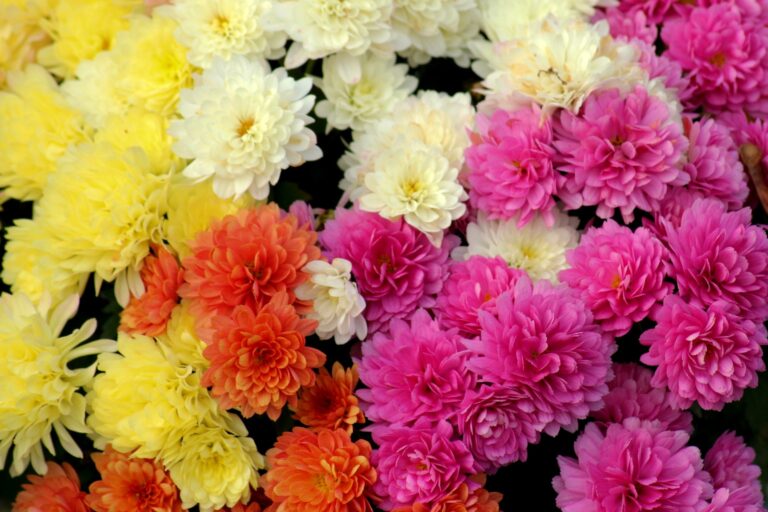
7. Chrysanthemum / Garden Mum / Potted Mum / Florists Mum
Chrysanthemums are a beautifully colorful flowering plant that warm and enrich spaces indoors and outdoors. They are perennials.
Most people tend to buy them potted for indoors and then transplant them into the garden when the flowers wilt. Come the following spring, the yard will be full of color.
They love direct sunlight and do not require much watering. They like windowsills where they can enjoy lots of indirect sunlight.
If you are going to grow them outdoors the temperature should be around 75°F and they should have five hours of morning sunlight with shade in the afternoon when the temperature rises.
The soil should be a little moist but do not overwater. Make sure they have good drainage.
As soon as the flowers wilt, you should clip the dead flowers off to make room for new blooms. Give the plants some fertilizer at the beginning of spring.
Mums primarily remove benzine and ammonia from the air, making them great if you have cat litter indoors. They will remove the smell of the urine and freshen the air.
They also purify the air by removing xylene, toluene, and trichloroethylene from the air thanks to their high transpiration rate. They are toxic to all mammals if ingested.
8. Lady Palm / Rhapis Palm (Rhapis Excelsa)
The exotic lady palm is definitely a great indoor palm if you do not want a larger palm in your house.
As with many other palm trees, the lady palm grows according to the space you provide it with. However, it requires a lot of water and very efficient drainage to prevent root rot.
It can grow 6 feet tall making it suited to the indoors or outdoors. The lady palm will grow at any temperature as long as it has a steady supply of water.
According to NASA’s research, the lady palm is effective at removing benzine, formaldehyde, xylene, trichloroethylene, toluene, and ammonia.
It is recommended for cat owners as it reduces the smell of ammonia from cat litter.
9. Bamboo Palm (Chamaedorea Seifrizii)
When we think of palm trees, most of us think Miami, heat, sun, Miami… But the Bamboo Palm tree is the perfect indoor palm that does not require either extreme heat or much light.
The more light it is exposed to, the taller the tree will grow; which is why you should plan to put the tree well away from windows if you do not want an indoor jungle.
If you want them to grow full size, it is better to plant them outdoors.
Its dark green leaves will calm the mood wherever you plant it. You should water the plant only when the soil feels dry and drainage is very important to have.
You should supply the plant with a good time-release fertilizer once a year.
The size of the leaves will mean you will also need to wipe the leaves down when you water using a damp cloth.
Wiping the leaves down helps them retain water better, it helps the plant to properly transpire and photosynthesize, it clears off any mites and cleans normal household dust off the leaves.
10. Dwarf Date Palm / Pygmy Date Palm (Phoenix Roebelenii)
Dwarf date palms hail from Southeast Asia; they can be found across the globe in tropical and subtropical regions.
Don’t be fooled by the name; the dwarf date palm can reach 6 – 10 feet tall!
They are very popular features in office buildings and shopping malls, where their exotic flair serves to calm and relax workers and clients or customers.
The dwarf date palm has small, yellow flowers that eventually mature into sweet, sugary, delicious, purple dates.
They do not do well with frost or snow, which is why they are better suited to indoors. They grow best above 30°F; optimally at 50°F to 113°F.
They like a lot of light – sun or semi-shade is best – and a lot of water with excellent drainage to prevent root rot.
The dwarf date palm is effective at cleaning formaldehyde, xylene, and toluene from the air.
11. Areca Palm / Golden Cane Palm / Yellow Palm / Butterfly Palm (Dypsis Lutescens)
The Areca palm is a flowering palm originating from Madagascar. Its beautiful foliage has made this a very popular indoor plant.
It likes the light as much as any other palm does, therefore it should be in a well-lit to a slightly shady area near a window. It does not require frequent watering and grows well between 59°F and 95°F.
The Areca palm removes formaldehyde, toluene, and xylene from the air indoors.
12. Reed Palm (Chamaedorea Seifrizi)
The reed palm has a unique exotic appearance that makes it popular for indoor environments as centerpieces.
They love the shade and therefore are ideal for indoors. It is a small palm with bamboo-like stems and feathery fronds.
It has small flowers and berries. It requires a minimum temperature of 65°F and a maximum temperature of 75°F.
It removes benzine, trichloroethylene, and formaldehyde from the air. This palm is toxic to pets.
13. Spider Plant / Airplane Plant (Chlorophytum Comosum)
Spider plants are rapidly multiplying plants that reproduce smaller versions of themselves as they grow which can be cut off and replanted anywhere you need ground cover quickly.
They are also very attractive in hanging baskets.
You do not need to be a horticulturist to grow a spider plant. They need semi-sun or shade to grow but prefer to be indoors.
They require very little water – only when the top inch of soil is dry. They grow between 59°F to 86°F
If you are allergic to dust this is an ideal indoor plant for you because the leaves are well equipped to reduce mold and allergens.
Tests conducted by the University of Arkansas and reported on by the Cooperative Extension Service revealed the spider plant is one of the most effective plants for removing the toxins xylene, toluene, and formaldehyde removing 90% of these toxins within two days.
14. Asparagus Fern (Asparagus S.prenggerii)
This is a stunning indoor fern. It develops soft stems that look great in a hanging basket or in a corner space and require little maintenance.
Originally from South Africa, Aloe Vera enjoys shady areas or moderate, indirect sunlight, with moderate to high temperatures.
It does not need to be watered often and when watering, you should only water when the top layer of soil is dry, and water in moderation.
You should supply fertilizer twice a month for optimum color, growth, and to facilitate good air purification.
It is toxic to humans and animals if ingested; keep out of reach of children and pets.
15. Boston Fern (Nephrolepis Exaltata ‘Bostoniensis’)
This is a lush fern that, unlike many ferns, can tolerate light well. They grow quickly and are great for a hanging basket.
They require moist soil and require temperatures between 60°F and 75°F. They do not like cold drafts as the cold will dry the soil out quickly.
This is nature’s humidifier. If you or any member of your family have any chest complaints the Boston Fern will help trap pollutants like dust and pollen that can cause asthma attacks.
This makes them a very valuable commodity. It will also help with dry skin.
This fern eliminates formaldehyde, toluene, and xylene.
16. Kimberly Queen Fern (Nephrolepis Exaltata)
The Kimberly Queen Fern grows naturally in humid forests and swamps. Does that make it an ideal house plant? Absolutely!
Generally speaking, plants from forests or humid areas do very well indoors as indoor humidity is often higher than outdoors, except when an air conditioner is in use.
This is a tough indoor plant that is identical to the Boston fern in all ways but one, it grows more upright than the Boston fern. As with the Boston fern, they tolerate light well.
They grow very quickly but are better suited to a spot on a ledge or the floor than a hanging basket because of their upright growth.
They require moist soil and require temperatures between 60°F and 75°F.
The Kimberly fern also eliminates formaldehyde, toluene, and xylene.
17. Gerbera Daisy / Barberton Daisy (Gerbera Jamesonii)
I cannot begin to describe the beauty of the Barberton daisy as it grows in the wild here in South Africa.
Local and international tourists come by the hoards to see this breathtaking display of mother nature’s grace every year.
This is one of my favorite indoor plants because of the stunning flowers.
Gerbera Daisies have pink, yellow, salmon, orange, and white flowers of different sizes. While they originate from South Africa – like me – they are tough and gorgeous no matter where you live.
They love light. Whether you grow them indoors or outdoors, plant them in a lot of sand or potting soil in full sun.
They need to have very good drainage, which means having them in pots will ensure better success in wetter climates. You can spray them periodically with an organic spray like pyrethrum or neem oil.
If you are growing them outdoors, watch out for caterpillars and leaf miners. They could turn your plants into a feast.
This flower blooms during and after the rain season. They require a lot of water. They can be grown indoors just as well as they grow outdoors bringing rich colors to any room.
They require temperatures of between 55°F and 75°F. They love direct sunlight so find the sunniest windowsills for these bloomers.
NASA has run tests on so many plants to study their effectiveness at cleaning the air, and the Gerbera Daisy was one of the top performers.
They reduce benzine and formaldehyde from the air.
18. Snake Plant / Mother-In-Law-Tongue (Sansevieria)
Snake plants (also known as mother-in-law-tongue) are the kind of plants those who do not have green thumbs will do well with. They don’t care if you do not tend or water them for weeks.
In fact, watering them too often or giving too much water is more likely to cause these plants to rot and die than not watering them for weeks.
They have beautiful, upright leaves that always look fresh and attractive.
Snake Plants do well in darker, more shaded conditions. This makes them great indoor plants as they do not require prime window space to survive.
You will not need to worry about insects eating the leaves as they are not really attractive to bugs. They are very toxic if ingested.
Snake Plants clean the air by removing formaldehyde and benzine from the air.
19. Aloe Vera (Aloe Barbadensis Miller)
Aloe Vera has become a buzz topic over the last fifteen years as more and more research has been carried out to ascertain the medical benefits of this plant – of which there are many.
This plant is very effective at cleaning the air you breathe and the milk from the leaves can be used to treat acne, burns, cuts, and assist digestion.
Extracts from the aloe vera are used for cosmetics and health purposes, but direct ingestion is highly toxic and can lead to severe symptoms or even death.
Aloe Vera removes formaldehyde and benzine from the air.
20. Dendrobium Orchids / Cane Orchid (Dendrobium spp.)
Orchids are very popular houseplants because they are stunningly sophisticated and incredibly forgiving. They grow almost everywhere; they just do not like extreme weather – either hot or cold.
The dendrobium orchid has small white, green, pink, yellow, or purple flowers that grow in rows.
It has narrow, dark green leaves that grow from the cane rather than the stalks on which the flowers bloom.
Orchids are strictly a shaded, artificially lit area plant. They require extremely little water (a tablespoonful will last a week). Their ideal temperature is between 59°F to 86°F.
They are effective houseplants for cleaning toluene and xylene from the air.
21. Moth Orchid (Phalaenopsis spp.)
The moth orchid takes its name from the more rounded flowers it produces. It blooms year-round and is also very easy to grow.
The flowers range from pure white to spotted harlequins of white, pink, purple, and other beautiful colors.
As with the dendrobium orchid (and all others), moth orchids do not like extreme weather. Moth orchids do like light, just not direct sunlight.
They enjoy windowsills that do not get direct sunlight. For moth orchids to bloom, the temperature needs to be 60°F for several nights.
They like the soil to be moist but never saturated. Outdoors you will often see orchids growing with their roots attached in the trunk of a tree between a limb and the trunk.
This allows them to draw moisture from the tree without the roots being drenched. That is an indicator of how little water they need.
Do not be tempted to overwater them and remember to provide them with good drainage.
The moth orchid leaves are also different from the dendrobium orchid in that they are fleshier and oval-shaped.
As with the dendrobium orchid, moth orchids remove toluene and xylene from the air.
22. Peace Lily (Spathiphyllum)
The beautiful Peace lily is a hardy plant that requires very little maintenance. Because they require little maintenance, they are ideal indoor plants.
Peace lilies have dark green leaves with white leaf bracts that grow over the actual flowers.
They grow well in areas that do not have a lot of light (which is why they are sometimes referred to as closet plants). They grow well in areas with medium to low light.
They do not do well if they are overwatered. Remember that plants require very little water to carry nutrients from the roots to the leaves and flowers.
I know the temptation is real, but peace lilies do better with underwatering than they do with overwatering. Only water them when the soil is very dry and just give a little water.
Other than that, if you give your peace lily a little fertilizer twice a year it will give you beautiful flowers and cleaner air.
While they are not considered toxic, they do need to be out of reach of small children and dogs as they can make the curious ill if ingested.
23. Flamingo Lily (Anthurium Andraeanum)
Who does not love lilies? These proud, upright flowers make for such a dignified environment that they are beautiful for both your home and your office.
If your flamingo lily gets enough of the right kind of light, it can bloom several times throughout the year.
They are evergreen plants that have thick, heart-shaped leaves with stunning pink or red flowers that last for months once they bloom.
They do not require frequent watering and like shade or artificial light. They do not do as well outside as they do indoors. They require temperatures between 53°F and 86°F.
They do have one downside; they are considered poisonous in that they produce calcium oxalate crystals.
The sap can cause eye irritation if you touch the plant or flower and then touch your eye or if they are in a drafty area where the draft could blow pollen into the air.
They are one of the best indoor plants for purifying the air as they absorb ammonia, formaldehyde, xylene, and toluene from the air.
24. Marginata / Dragon Tree (Dracaena Marginata)
This interesting looking indoor ‘tree’ is also known as the dragon tree. There are several varieties to choose from, all bright and beautiful:
- The Dracaena Marginata Tricolor has dark red edges on the green leaves with an ivy stripe down the center of each leaf
- The Dracaena Marginata Colorama is mainly pink with white and green variegated stripes
- The Dracaena Marginata Bicolor has red and green striped leaves
- The basic Dracaena Marginata has dark green leaves with a thin red margin on the leaf edges
The stem of the tree looks much like light brown bark, the leaves are stiff and look like the blade of a sword.
They can develop tiny, fragrant white flowers which then become small yellow-orange inedible berries; but grown indoors this will very seldom happen.
This plant is great for cleaning the air for humans, but it is highly toxic to cats and dogs.
Their hardiness makes them great indoor plants for beginners. They require very little water (they are drought tolerant).
It needs soil that drains well, regular watering and lots of indirect sunlight. They do well where the temperatures average between 70°F to 80°F.
NASA has ranked this one of the top plants for purifying the air of all toxins. If ingested, it is toxic to pets.
25. Eucalyptus Tree/Plant (Eucalyptus Globulus)
Eucalyptus oil is often used by people who choose to use aromatherapy over visits to the doctor – myself included.
Finding an indoor eucalyptus tree can often be problematic as they are native to Australia and many countries consider it an invasive species.
If you do not know, the eucalyptus can grow very large outdoors – up to 60 feet tall. But it is an incredible indoor plant too.
You can regulate the size by slowly repotting until it reaches the largest size you want it to be, at this point you will either have to plant it outdoors or donate it to a nature park. It is a fast-growing house plant.
They are evergreen trees that release a heavenly aroma. This plant can reach 8 feet tall indoors.
Make sure it does not get too tall to get through doors for when you want to move it outdoors.
Eucalyptus trees/plants require full sun. They need protection from frost and do not do well with snow. They do not grow in temperatures below 50°F.
If you live in a cold area, you will need to carefully consider what you will do with the tree when it gets too big, donate it to a zoo to feed animals, donate it to a park, give it to an aromatherapy practitioner, etc.
Indoors, you will have to make sure the soil does not dry out, but they do not require a lot of watering.
The scent of eucalyptus is very good for people with lung issues, asthma, and sinus issues.
Many cultures that practice natural healing make a cream/paste from the leaves to treat muscle or joint pain, and as an antiseptic for cleaning wounds.
It also is used for its antimicrobial abilities, to promote dental health, to treat fungal infections, as an insect repellent, to provide pain relief, and to stimulate the immune system.
Ingesting the pure, distilled oils used in aromatherapy is extremely dangerous because of the concentration of toxins.
Eucalyptus trees are extremely effective at trapping and removing carbon dioxide and releasing oxygen into the air. This is why they have so many breathing related benefits.
26. African Violets (SaintPaulia)
I have to harp on this gorgeous indoor plant just a bit because it is from Africa, just like me. It can be grown indoors from seed anywhere on this beautiful planet, wherever you may be!
Please trust me when I say it is worth every moment you wait for the seed to become a flower!
They are perfect pot plants because they do not grow tall, they do not spread out, and they do not require a lot of space. These are lovely windowsill plants. They love indirect or artificial light.
African violets help relax you by stimulating the release of adrenaline and increasing the flow of oxygen to the brain. They are great stress releases. They release the most common household toxins.
27. Rubber Plant (Ficus Elastica)
The rubber plant is a beautiful indoor ‘tree.’ It grows upright like a tree and has beautiful dark green leaves.
In summer, they can do well outdoors. It will grow according to its environment. Indoors in a pot, it will not grow as big as it would outdoors directly into the ground.
Drainage is very important; they do not like to sit in water. You should also wipe the leaves with a damp cloth regularly and or spray them with a mister periodically.
Rubber plants enjoy lots of bright light, but they do not like direct sunlight.
Rubber plants remove formaldehyde from the air. Rubber plants are very toxic to humans and animals if ingested.
28. Weeping Fig (Ficus Tree)
This tropical or subtropical plant is a popular evergreen tree that makes a great feature in a home or office environment.
It has dark, glossy leaves on slender branches growing off a single trunk. It grows according to the surface space you provide, i.e., if you plant it in the ground outdoors, it will grow large, but if it is in a pot indoors, it will grow less.
It is temperamental about being moved about, so pick a permanent spot when you bring this plant home.
It thrives in areas where the temperature is 75°F to 80°F, the temperature can get to a low at night of 60°F.
It is a very effective plant for removing formaldehyde, benzine, toluene, octane, and trichloroethylene. It is toxic to cats and dogs if ingested.
29. Chinese Evergreen (Aglaonema Modestum)
The Chinese Evergreen is a lovely indoor plant that can tolerate being overlooked for a day or two.
This plant likes artificial light or shade and is very easy to care for. It requires less frequent watering; only water it if the top inch of soil is dry. It thrives in warmer temperatures, between 59°F to 86°F.
It is very effective for clearing the air of formaldehyde and benzine. This plant is toxic if ingested.
30. King of Hearts / Fern Leaf Bleeding Heart / Dicentra / Bleeding Heart / Western Bleeding Heart (Hohomomena Wallsii)
The king of hearts is a beautiful bushy plant whose flowers will melt the queen’s heart. The densely bunched, blue-green leaves give way to drooping blooms of pink, purple, yellow, or cream flowers.
This North American plant is an easy to care for perennial.
They love the shade or artificial light, but they are very tolerant of the sun and extreme heat. They should only be watered when the top inch of soil is dry. They grow in warmer weather, between 59°F and 86°F.
They are very efficient at removing xylene and toluene from the air. King of hearts is toxic to animals.
Conclusion
There are those who laugh at the idea of using indoor plants to purify air stating that the number of plants needed to clean a small room would not be practical, if even viable.
If you are wondering how many plants will effectively rid your home of air pollutants NASA has that covered.
Dr. Wolverton’s research indicates that to effectively change the air you breathe indoors, you would need one medium to large plant per square foot.
That can mean turning your home into a tropical rainforest using any plant you fancy, or it could mean think smart: get the best plant for the job.
I am not a scientist; I am a homesteader. I do suffer from asthma – the result of living in a big city for too many years.
I have bloomers in my home and spend hours tending to my greenhouse. I cannot guarantee you will regain lung capacity or heart function any more than I could predict you getting hit by a bus.
I can tell you that in my own experience, when my chest is tight, after spending a couple of hours locked away in my greenhouse tending my plants my chest relaxes, it is not so tight, my cough settles, and I come out feeling invigorated.
Whether you ascribe that to stress release, or a non-toxic environment is up to you. My money is on the oxygen released by my plants into the enclosed environment.
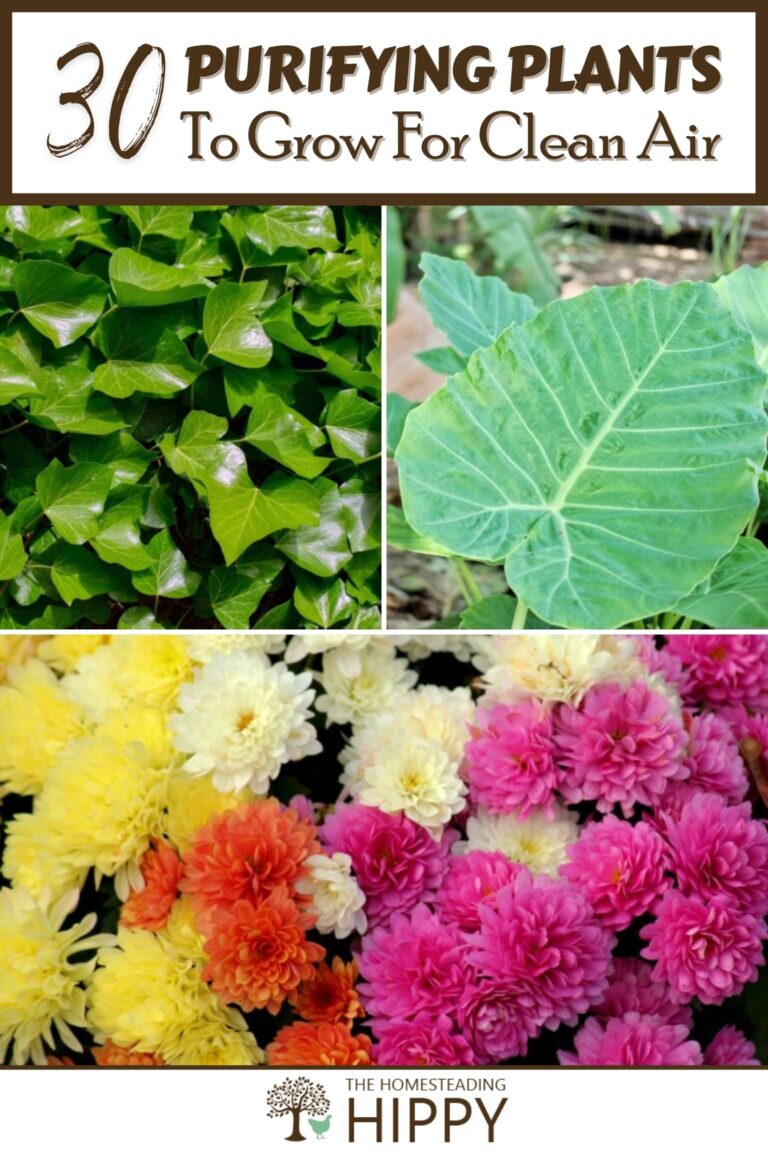

Di-Anne Devenish Seebregts was raised in an environment where daily life consisted of hiking, environmental conservation, growing fruit and vegetables, and raising poultry for meat and eggs.
She combined her passion for the writing word with her love of the pride that comes with not relying on others. She raised three children (who are now adults) to value the environment, and understand the value of being self-sufficient.
Find out more about Di-Anne on our About Us page.
